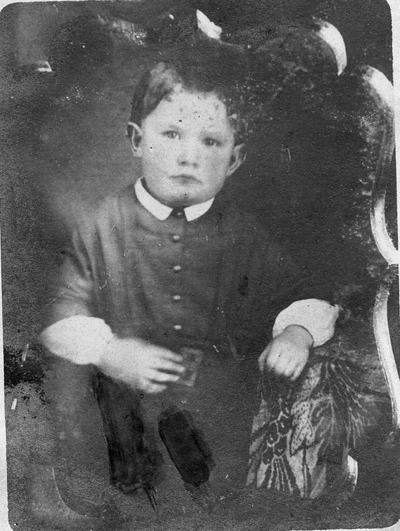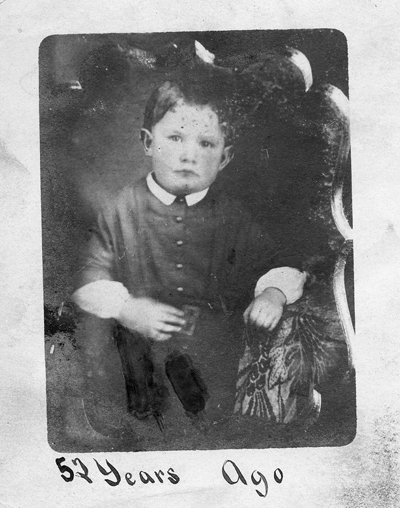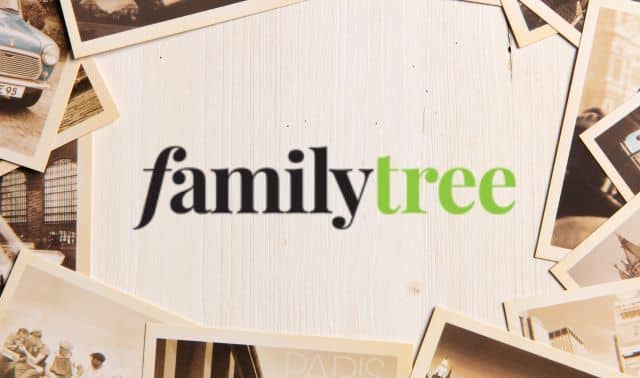Sign up for the Family Tree Newsletter Plus, you’ll receive our 10 Essential Genealogy Research Forms PDF as a special thank you!
Get Your Free Genealogy Forms
"*" indicates required fields
I’ve received several questions about the topic this week, so I’m going to delay discussing the identity of the woman in Shirley’s photo until next week to focus more on copies.
So, how can you spot a copy? Sometimes it’s a little thing and other times it’s pretty obvious.
Here’s a photo from my research collection:

It’s a little fellow from the mid-19th century. Can you see the scalloped mat visible in this copy? The original in this case was a daguerreotype. The reflective nature of a daguerreotype made it difficult to photograph. It’s a great example of an obvious copy. The rest of the evidence in the image added to the identification of it not being an original.
The copy is a real-photo postcard of the type that dates to the early 20th century. Real-photo postcards are introduced circa 1900. Someone (perhaps the little boy all grown up) wrote on the card that the original image was taken 52 years in the past. Too bad there are no other identifiers on the card, like a name, date or location.
There were photographic copies in the early days of photography as well. The only way to make an identical daguerreotype was to either duplicate the pose or make a copy of the original.
Photographers’ imprints often include a statement about their ability to provide copies. Daguerreotypes, ambrotypes, paper prints and tintypes were all copied in photo studios when an owner needed another one.
One person asked about remounting of pictures. Theoretically it’s possible to remount an older image on newer card stock, but I’ve never seen an example of this from the 19th century. It was far easier for a photographer to re-photograph the original.
I’m still working on Shirley’s mystery. She’s added another image to the mix. Tune in next week!
Solve your family photo mysteries with these books by Maureen A. Taylor:
ADVERTISEMENT





